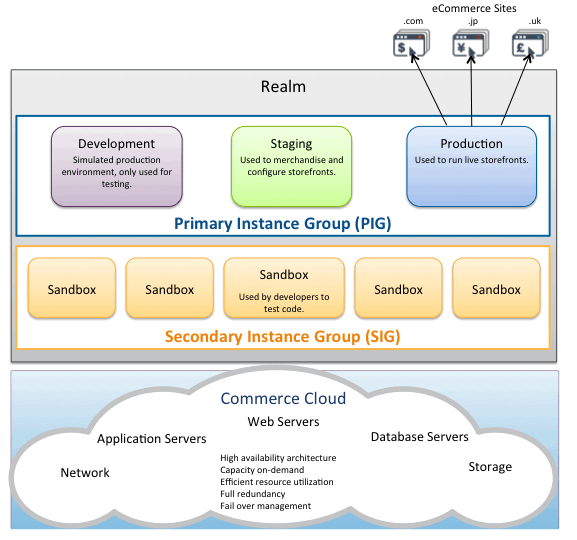Concepts and Terminology
B2C Commerce provides the resources and processing for your ecommerce sites, called a storefront in the B2C Commerce documentation. You create and build your sites in your realm.

Realm
- Development instance: used for site configuration, data enrichment, and data import.
- Staging instance: used to test your site before deployment.
- Production instance: hosts the live site that is used by customers.
Single and Multiple-Realm Configurations
In most cases, you have a single realm in which you can develop, stage, and deploy multiple sites with different branding or locales. The people managing the storefront site don't have to be in the same location. Sites can share product catalogs or have different catalogs.
If you have different lines of business or global teams that each have their own processes or business policies, consider maintaining multiple realms. You can also have separate realms if you have distinct organizations with separate back-end integrations, schedules, or other concerns that make it advantageous to let each team manage their sites independently. Sites in the same realm can share the product catalog for product data. Sites in different realms can't share data through the catalog structure. However, you can share data by importing it into different realms.

Primary Instance Group
The primary instance group has three instances, which merchants use to add data, test code, and run live sites. A realm can have only one PIG per realm.
Secondary Instance Group
The secondary instance group (SIG) contains your sandbox instances. The minimum number of sandboxes in a SIG is 3, and the maximum is 47.
Commerce Cloud
The Commerce Cloud is the underlying resources used to run your instances and live sites that are managed by Salesforce. You never interact directly with the cloud, but it is the foundation that supports your site.